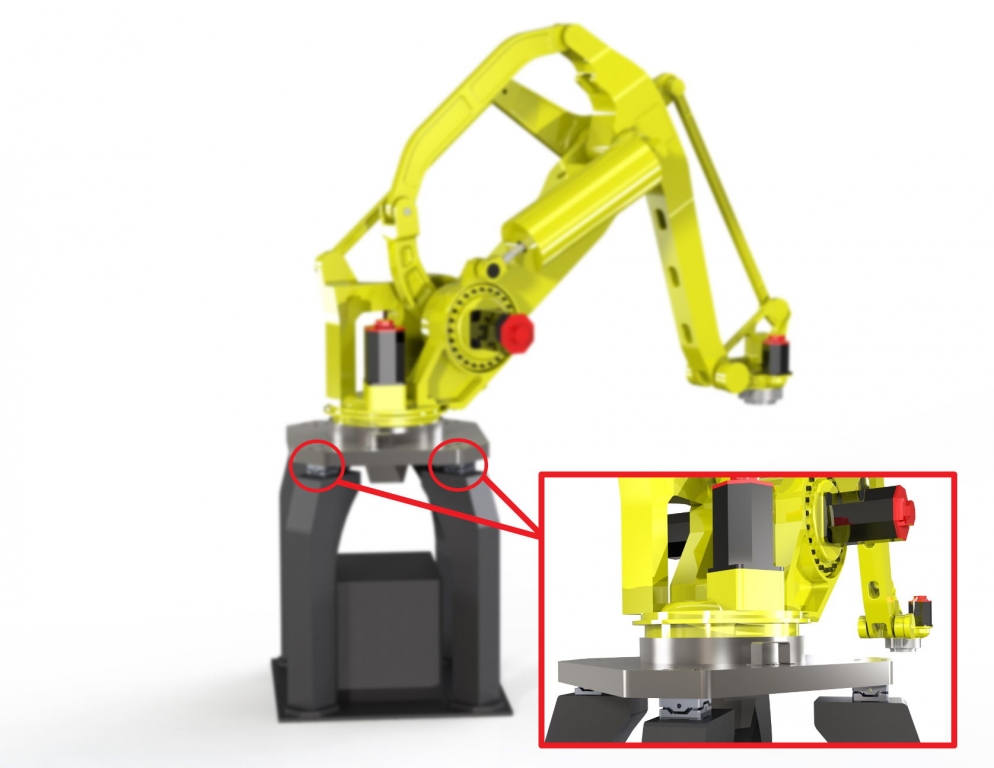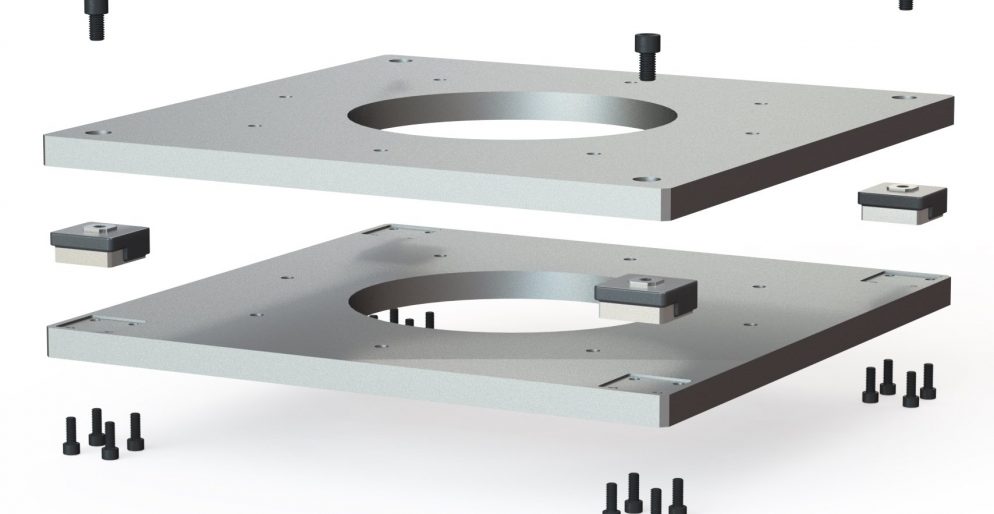Sometimes getting the perfect measurements may require getting creative with your testing set-up. One of the easiest ways to elevate your test is by combining multiple instruments. The Michigan Scientific Three Axis Load Cells (TR3Ds) are compact transducers that measure forces in three perpendicular directions. These rugged transducers come in a wide variety of sizes and capacities and they all deliver accurate, quality measurements. Using multiple transducers in one set-up can provide an easy and economical way to enhance any test, turning your 3D data into 6D measurements.
It is important that customers get the most out of each test. Some applications may require a higher capacity than the TR3D-D-100K provides, for measuring large forces. Other applications may need to support a large moment, or people are interested measuring both forces and moments. Such an application could be measuring the over-hanging moment on a robotic arm during operation, shown below. Gathering data during these applications may seem complex, but it can easily be achieved through some simple modifications to off-the-shelf products. Michigan Scientific has developed an easy set-up and calculation guide for these applications.

Multiple TR3D’s can be used to measure forces and moments in a system.
How It Works
Getting these measurements can be simple and economical. When four off-the-shelf TR3D’s are used in an array, the moments and forces that are being experienced during the test can be calculated. The load cells are mounted to the equipment or to custom mounting plates. It is important that while in the array, the individual load cells are fixed in a way so that each load cell is subjected to forces, and not individually subjected to localized moments. The load cells work together to support the acting forces.
Array Design
The transducers needed for each test is dependent on load capacity, moment capacity, and size constraints. Michigan Scientific’s standard models of Three Axis Load Cells are available in load capacities ranging from 250 lb to 100,000 lb. Michigan Scientific engineers have years of experience in choosing the perfect load cell for each application based on capacity and size requirements. Additionally, our engineers can design custom adapter plates and machine them in-house, providing reliable instrumentation and measurements.
Array Output
Once each application has the ideal testing set-up, the measured outputs can be used to calculated net moments and forces. Each load cell that is used in the array has three independent outputs. An array of four TR3D’s would have a total of twelve channels of data. The forces are measured at each individual location where the load cell is. The outputs are combined to measure both the net forces and net moments acting upon the system. This can be calculated during post-processing of the data or Michigan Scientific can provide a program for the SOMAT eDAQ system to automatically calculate the net moments and forces.
This six-directional (6D) array of load cells is commonly used for measuring degrees of freedom in a system. Combining multiple load cells both measures or reacts to large moments in small spaces. They are a simple and economical way to elevate your test and get the measurements you need. If you want to begin discussing your 6D application with an engineer, contact us to get started.
